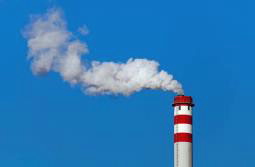FOR IMMEDIATE RELEASE
ACS News Service Weekly PressPac: January 04, 2012
New materials remove CO2 from smokestacks, tailpipes and even the air
“Carbon Dioxide Capture from the Air Using a Polyamine Based Regenerable Solid Adsorbent”
Journal of the American Chemical Society
Scientists are reporting discovery of an improved way to remove carbon dioxide — the major greenhouse gas that contributes to global warming — from smokestacks and other sources, including the atmosphere. Their report on the process, which achieves some of the highest carbon dioxide removal capacity ever reported for real-world conditions where the air contains moisture, appears in the Journal of the American Chemical Society.
Alain Goeppert, G. K. Surya Prakash, chemistry Nobel Laureate George A. Olah and colleagues explain that controlling emissions of carbon dioxide (CO2) is one of the biggest challenges facing humanity in the 21st century. They point out that existing methods for removing carbon dioxide from smokestacks and other sources, including the atmosphere, are energy intensive, don't work well and have other drawbacks. In an effort to overcome such obstacles, the group turned to solid materials based on polyethylenimine, a readily available and inexpensive polymeric material.
Their tests showed that these inexpensive materials achieved some of the highest carbon dioxide removal rates ever reported for humid air, under conditions that stymie other related materials. After capturing carbon dioxide, the materials give it up easily so that the CO2 can be used in making other substances, or permanently isolated from the environment. The capture material then can be recycled and reused many times over without losing efficiency. The researchers suggest the materials may be useful on submarines, in smokestacks or out in the open atmosphere, where they could clean up carbon dioxide pollution that comes from small point sources like cars or home heaters, representing about half of the total CO2 emissions related to human activity.
The authors acknowledge the Loker Hydrocarbon Research Institute and the U.S. Department of Energy.
Contact
Science Inquiries: Michael Woods, Editor, 202-872-6293
General Inquiries: Michael Bernstein, 202-872-6042


